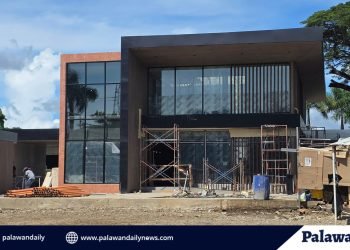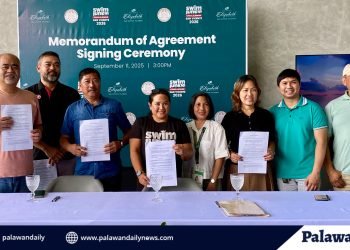
Palawan, considered to be the country’s “last ecological frontier,” is widely known throughout the entire world because of its rich biodiversity. Many tourists from different parts of the country and the world visit Palawan to experience what the island has to offer.
However, apart from its greens, crystal clear waters and beaches, what most people do not know about Palawan is that it is also rich when it comes to culture and heritage.
This can be gleaned from Palawan Museum located at the heart of Puerto Princesa, along Mendoza Park . Opened in 1991, the museum is run by the Natural and Historical Foundation of Palawan and the City of Puerto Princesa, Inc.
It has anthropology, archaeology, biology, ethnology and historical sections. The museum was put up to serve as a center and repository of relics and artifacts as well as a genuine source of the rich natural and historical legacy and source of a growing collection and reference on Palawan’s cultural heritage.

An overlooked institution
While many tourists are too busy exploring the white sand beaches and the crystal clear waters, the cluster of murals, libraries and anthropological structure of Palawan Museum are also waiting to be explored. And since it is not included in the itinerary of the City Tour, many of the tourists are unaware of the museum’s existence.
Ms. Maribel Aquino, a clerk from Palawan Museum, said the only ones who are able to visit and see the museum are the ones who happen to pass by. “Meron din naman iilan-ilan na agency na nagdadala pero usually hindi nila dinadala kasi walang commission.” she said. “Yung mga foreigners na pumupunta dito ang ganda ganda ng feedback nila, yung iba naman hindi nila alam na may museum pala kung hindi lang sila napadaan.”
They also tried to appeal to the City Tourism Office of Puerto Princesa regarding the issue but to no avail. “Kami panay panay ang sulat namin sa City Tourism na isama kami kasi dapat ‘pag pupunta ka sa isang lugar ang unang una mong bibisitahin [ay] museum. Kaya lang ang nangyayari sa mga guide, hindi nila dinadala sa museum kasi wala naman silang makukuha,” said Ms. Aquino.
“Katakot takot na sulat na ang ginawa namin sa President ng Tour Agency ng Palawan, wala rin. Sa City Tourism naka-ilang sulat na rin kami, wala rin silang magawa,” she added.
Even some Palaweños are unaware of the museum’s presence. Ms. Aquino said, “Minsan nga ‘yung mga Palaweño pa ang hindi nakakapasok dito.”
She also expressed that the locals should be the first ones to explore their cultural heritage. “Bago ka muna pumunta sa ibang lugar, alamin mo muna kung ano ‘yung [history] ng pinanggalingan mo,” she said.
But then again, because of the limited amount of budget that they have, they can only do so much to promote the museum. “Kulang din kami sa mga promotions kasi limitado din ‘yung budget ng museum. Umaasa lang ang museum sa [financial] aid ng city taon-taon. Buti nga ngayon tumaas na, one million na, dati 500,000 lang. So kung walang bisita, kulang pa din,” Ms. Aquino said.
For the meantime, they are working on having the facilities repaired or renovated to enhance the visitors’ experience.
Visit the Museum today
There are so many things to discover and learn from at the Palawan Museum that will awaken the historian in you. From a collection of the everyday items used by the early tribes of Palawan to the iconic Manunggul Jar, each artifact is complete with a label or an information board in order for each visitor to understand what they are looking at.
The first floor is home to the Manunggul jar and paintings showcasing wildlife. Its second floor houses the exhibit on the ethnolonguistic groups and ceramics collection.
The museum also highlights the diversity of ethno-linguistic groups scattered in the lowland, highland, valley and coastal areas of the province such as the Palaw’an, Tagbanua, Cuyonon, Tau’t Batu, and the Batak tribe, all of whom have sections dedicated to them inside the museum.
The museum is open from Monday to Saturday from 8:30am to 12:00nn and 1:30pm to 5:00 with the following admission fees: PHP50.00 for local adults; PHP60.00 for the foreign; PHP20.00 for local students and PHP10.00 for the children.






















Discussion about this post